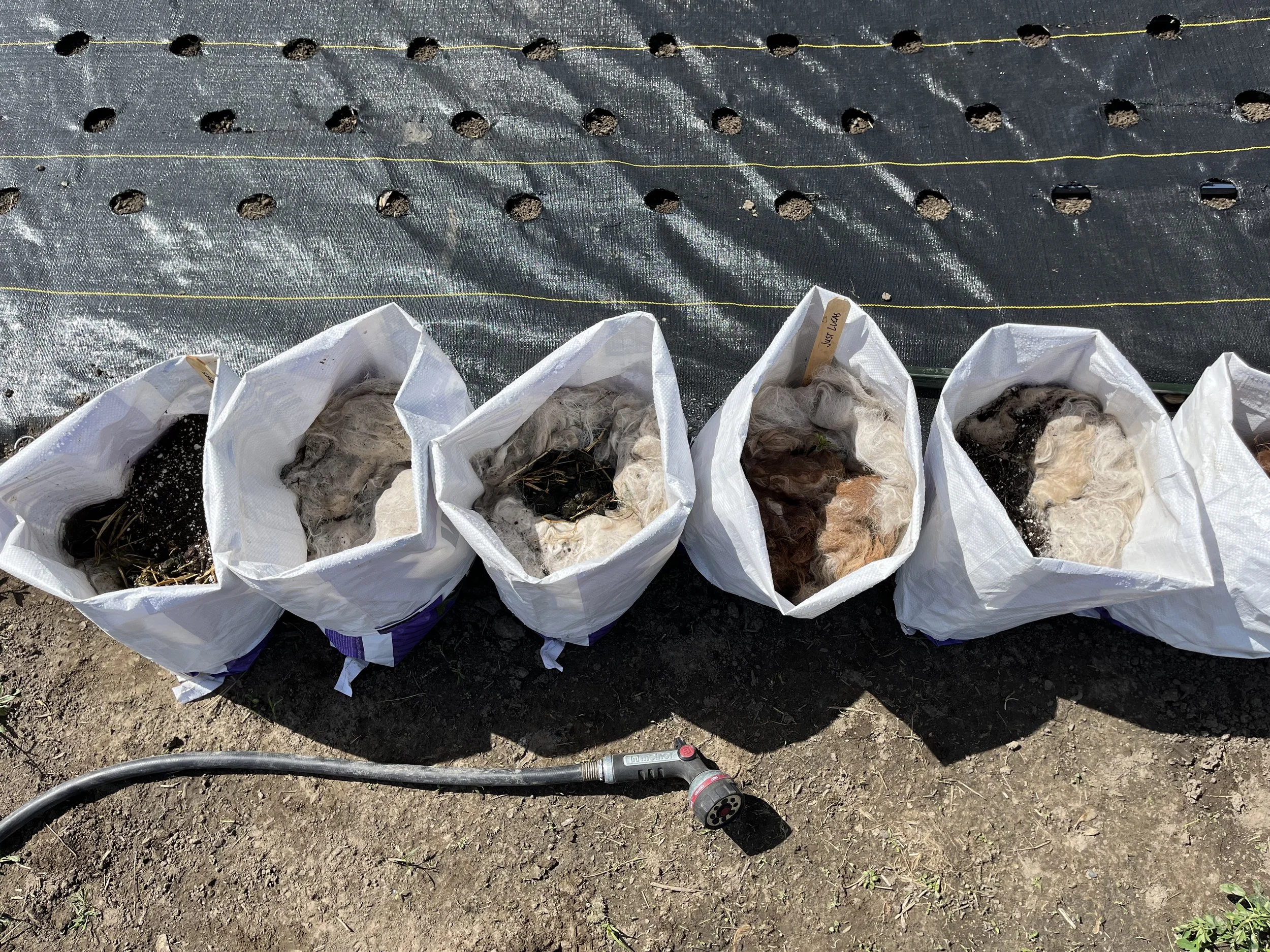dahlias & alpacas, part 2
As a farmer, being resourceful ranks as high as hard working does.
What this usually looks like is a lot of duct tape & baling twine holding things together - making do or doing without.
And inevitably it means we hang onto a lot of stuff, broken or otherwise, because you just never know.
Getting rid of things that can be used again or cannibalized into something else is an art and a skill. And I’ve got a fun one to share with you today!
As the alpaca herd has grown, so has their supplemental feed requirements. Their pelletized supplements come in 40 pound sacks made of a tightly woven tarp-like plastic.
The feed sacks are sturdy and tough. And since our recycle center no longer accepts plastic, I just can’t stomach throwing them in the garbage. I go through more than 50 bags a year, sometimes more if the winter is particularly harsh.
I’ve given a fair share of them away, too. And even sewed a reusable grocery bag out of them. I might try to make a bunch over the winter, but there’s just no time for sewing in season.
In the mean time, the bags keep multiplying and taking up valuable barn space, so I wanted to put them to use.
Because we have cold, icy winters, dahlias have to be lifted every fall and stored over winter otherwise they’ll rot. I’ve already shared how I use scrap alpaca fiber to insulate them in crates over winter.
Digging up the dahlias from our clay soil is always a hard, bent over task — that is only made worse because it comes at the end of a full season of growing, bending, stooping and shoveling.
And no matter how careful or diligent, digging dahlias almost always results in breaking some of the tubers.
So I wondered - what if I used the feed sacks as a grow sack for dahlias?
You know — similar to how some folks grow potatoes in burlap sacks?
So for this year’s experiment, I thought I’d try and see if growing them in these sacks would encourage tuber growth & quantity, while still giving me a few blooms. But also making the fall task of digging more like “dumping”!
If it works, this could be especially beneficial for propagating those new and hard-to-find varieties.
I filled the sacks with a variety of materials.
First, a layer of scrap alpaca fiber to provide a little resistance when it comes to draining. It gets super hot here and since they aren’t going to be buried in-ground, I don’t want the bags to drain too freely.
Then I added a few shovels full of native soil, a few heaps of alpaca poo and another hasty layer of fiber.
Each sack has either one single tuber, or a single (small) clump. Then I covered with more soil along with whatever other organic matter that was on hand — like wood shavings, shredded paper, used potting mix, you name it.
I lined them up along the last garden row — they make a secure weight to keep the landscape fabric from taking flight!
I can already tell that watering is going to “be a thing”. I’ve learned many times over the years that “if it’s not on drip, it’ll die”.
Simple fact is, come the heat of the season and the exhaustion, if I can’t flip a switch and walk away, it won’t get watered, simple as that.
I might rig up a few lines of drip tape, but I’m hopeful the location I picked will be conducive to regular hand watering because a hose is literally right there.
I’ve only done about 15 feed sack dahlia grow bags total - the rest of my tubers are planted into the ground as normal.
I’m looking forward to seeing how this little experiment plays out - and will share an update in the fall when I dig / dump!



